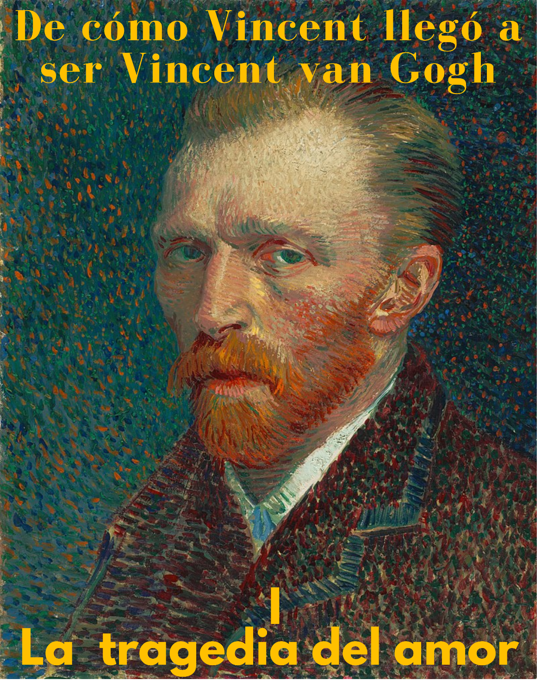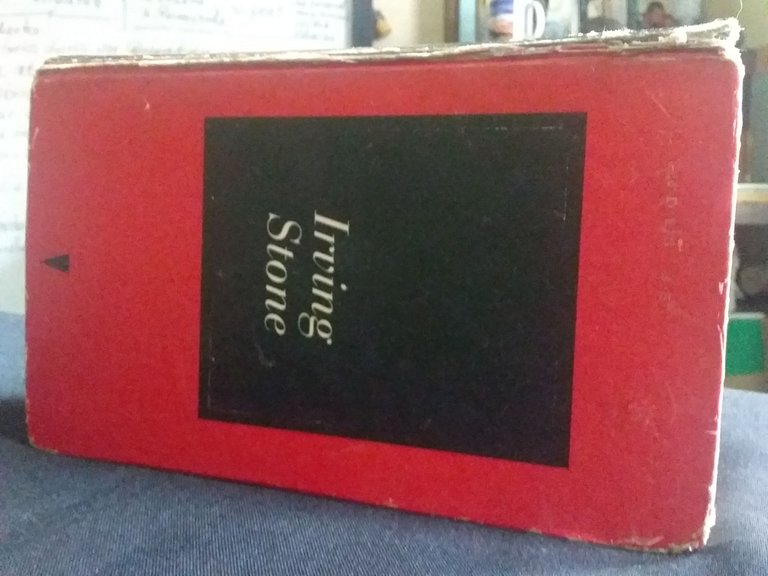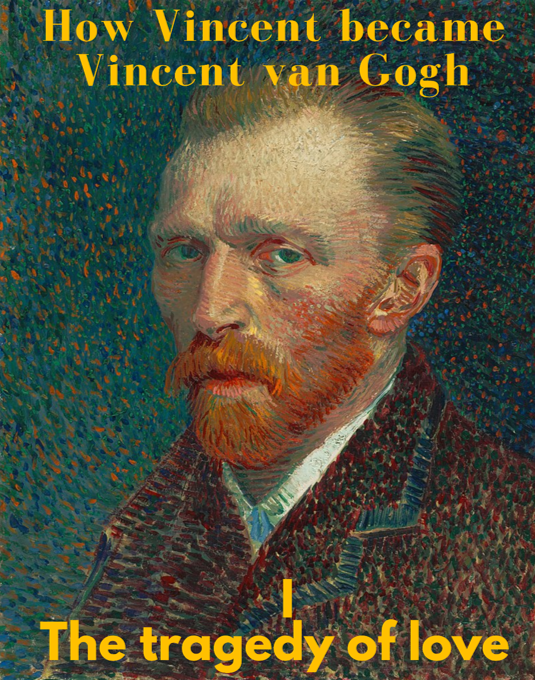
Vincent van Gogh, Self-Portrait, oil on board, 1887

Primer giro
Vincent van Gogh está a punto de cumplir veintiún años para el momento en que Irving Stone empieza narrando esta novela biográfica. Estamos hablando de 1874, vive en Londres, Inglaterra, es un joven de vigorosa figura, ojos penetrantes y fuego en su juventud; está enamorado por vez primera y como todo joven, es idealista; y como todo enamorado, exagera, ve el amor que camina en los que caminan, lo ve en las cosas, en el entorno y siente que la vida se abre para él, pero además, tiene todo para triunfar; es el mejor empleado de la Casa Goupil, una compañía donde los van Gogh tienen acciones, dedicada a la venta de obras de artes; tiene un sueldo de 5 libras mensuales que para entonces le permitían vivir holgado; tiene un apellido importante y un futuro prometedor como heredero de las Galerías Gaupil en París, Berlín, La Haya y Asterdam.
Está enamorado y no es correspondido; sufre, y llega a amar ese dolor, inconscientemente, como si fuese un compañero querido porque gracia a él, Úrsula, la chica a la que ama, está constantemente a su lado.
En esta introducción, Irving Stone (1903 – 1989), presenta el primer giro en la vida de Vincent. Todo ese amor juvenil se quebró en el interior del pintor cuando vio a Úrsula casándose con el hombre que amaba; en ese momento el hechizo se rompió y aunque nunca creyó que sería tan difícil, lo superó y puede parecer paradójico, pero la humanidad debe agradecer esa tragedia, porque gracias a ella, este pintor neerlandés, principal exponente del postimpresionismo, quien, para la fecha a la que nos estamos refiriendo, solo anhelaba vivir con su Úrsula, vendiendo cuadros a gente que no tenía idea de lo que compraba.

Foto propia
Esta primera parte es apenas un esbozo de lo intenso que fue la vida de Vincent van Gogh. Las próximas páginas son mejores, lo sé porque esta es mi segunda relectura de Anhelo de vivir (1934), un libro, que a mi juicio es una de las mejores novelas biográficas que se han escrito; en ella, el autor nos relata cómo fue que Vincent van Gogh llegó a ser Vincent van Gogh.
Lo que me encanta de esta obra, es lo bien escrita que está, lo bien documentada, su autor es un hombre que sabía con precisión el arte de escribir novelas biográficas y lo que pretendo con este escrito, más los que surjan de esta nueva relectura, es simplemente comentar mis impresiones, no tanto de la novela, sino de lo que hubiera pasado si ciertas circunstancias no se hubieran dado en la vida de este genio de la pintura.
En esta primera entrega, decía que debíamos darle gracias a su tragedia amorosa con Úrsula porque, qué hubiera pasado si lo acepta, si se casan; a lo mejor y para decirlo en palabras de Irving Stone “…hubiese perdido su única vida vendiendo cuadros horribles a gente estúpida”. Pero son solo mis apreciaciones porque quién asegura que si hubiesen llegado a casarse, no llegaría Vincent a ser el genio universal en que se convirtió. ¿Ustedes qué opina?

Vincent van Gogh, Self-Portrait, oil on board, 1887

The first turn in Vincent's life
Vincent van Gogh is about to turn twenty-one when Irving Stone begins to narrate this biographical novel. We are talking about 1874, he lives in London, England, he is a young man of vigorous figure, penetrating eyes and fire in his youth; he is in love for the first time and like every young man, he is idealistic; and like every young man in love, he exaggerates, he sees the love that walks in those who walk, he sees it in things, in the environment and he feels that life is opening for him, but also, he has everything to succeed; He is the best employee of the Goupil House, a company where the van Goghs have shares, dedicated to the sale of works of art; he has a salary of 5 pounds a month that by then allowed him to live comfortably; he has an important surname and a promising future as heir of the Gaupil Galleries in Paris, Berlin, The Hague and Asterdam.
He is in love and is not reciprocated; he suffers, and comes to love that pain, unconsciously, as if it were a dear companion because thanks to him, Ursula, the girl he loves, is constantly by his side.
In this introduction, Irving Stone (1903 - 1989), presents the first turn in Vincent's life. All that youthful love was broken inside the painter when he saw Ursula marry the man she loved; at that moment the spell was broken and although he never thought it would be so difficult, he overcame it and it may seem paradoxical, but humanity should be grateful for that tragedy, because thanks to it, this Dutch painter, main exponent of post-impressionism, who by the date to which we refer only longed to live with his Ursula and sell paintings to people who had no idea of what they were buying.
This first part is just an outline of how intense Vincent van Gogh's life was. The next pages are better, I know because this is my second re-reading of Longing to Live (1934), a book, which in my opinion is one of the best biographical novels ever written; in it, the author tells us how Vincent van Gogh came to be Vincent van Gogh.
What I love about this work, is how well written it is, how well documented, its author is a man who knew with precision the art of writing biographical novels and what I intend with this writing, plus those that arise from this new rereading, is simply to comment on my impressions, not so much of the novel, but of what would have happened if certain circumstances had not occurred in the life of this genius of painting.
In this first installment, I said that we should give thanks to his love tragedy with Ursula because, what would have happened if he accepts it, if they get married; maybe and to put it in Irving Stone's words "...he would have lost his only life selling horrible paintings to stupid people". But these are just my appreciations because who is to say that if they had married, Vincent would not have become the universal genius he became. What do you think?


